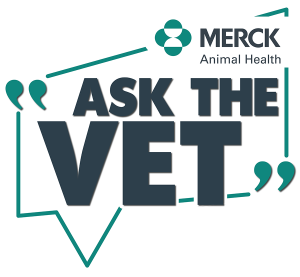

Vaccine Strategies
VACCINE STRATEGIES.
YOU ASK. WE ANSWER.
We all have people we turn to with questions. At Merck Animal Health, our extensive team of cattle veterinarians are seasoned professionals with years of field practice experience.
That’s why Merck Animal Health and Angus have teamed up – to provide relevant advice and expertise to producers. Here, Tim Parks, D.V.M., cattle technical services veterinarian at Merck Animal Health, answers questions submitted about
vaccine strategies.
Q: WHAT STEPS ARE IMPORTANT TO ESTABLISHING EARLY RESPIRATORY DISEASE PROTECTION?
Whether you calve in the spring, fall or both, the more we can do to help young calves build immunity within the first weeks and months of life can set them up for success.
We used to assume vaccinating calves at an early age was ineffective as the maternal antibodies would neutralize antigens introduced by the vaccine. Through research, we know now that it is possible to avoid interference with maternal antibodies by using quality intranasal vaccines, which will begin to put protective immunity in place within three to four days after vaccination.1
BOVILIS® NASALGEN® 3-PMH is the only intranasal vaccine that protects against the five most common pneumoniacausing viral and bacterial pathogens – IBR, BRSV, PI3, Pasteurella multocida and Mannheimia haemolytica. It also offers a needle-free, BQA-friendly administration and contains a unique BlueShadowTM diluent to show which animals have been treated.
Q: WHAT VACCINES DO COWS NEED IN THE FALL?
Fall pregnancy-check is a good opportunity to examine cows and cover any vaccination and parasite control needs. If the herd wasn’t vaccinated in the spring before breeding, fall is the time to give annual respiratory and reproductive vaccine boosters.
Vaccines that protect against Bovine Viral Diarrhea (BVD), Infectious Bovine Rhinotracheitis (IBR), vibriosis and leptospirosis are essential. Use a killed or modified-live vaccine (MLV) that’s labeled as safe for pregnant cows. MLVs should only be used if a cow has been vaccinated within the past 12 months with a IBR and BVD-containing MLV.
Q: HOW CAN I PREVENT CALF SCOURS?
Vaccinating cows prior to calving will stimulate antibody production that will result in higher-quality colostrum, ultimately giving calves better protection when they’re born. For example, you can administer a scours vaccine five2 to seven weeks prior to calving to boost antibody levels in the cow’s colostrum, so the newborn calf will have increased protection from scours.
BOVILIS® GUARDIAN® offers the broadest spectrum of antigens associated with major bacterial and viral causes of scours in young calves.
After birth, calves should get two quarts of colostrum within two hours and another two quarts within six hours for the best antibody absorption.
HAVE A QUESTION?
SUBMIT YOUR QUESTION TODAY AT
Ask your veterinarian, too. It’s important to work with your veterinarian who knows your goals and the health challenges in your area.
References:
1. Burdett W, Bolton M, Kesl L, Nordstrom S, Renter D, Roth J, Saltzman R, Xue W. (2011) Evaluation of the Onset of Protective Immunity from Administration of a Modified-live, Nonadjuvanted Vaccine prior to Intranasal Challenge with Bovine Herpesvirus-1. The Bovine Practitioner, Volume 45.
2. Guardian label has: administer a single 2.0 mL vaccination dose by subcutaneous route to pregnant cattle 3 months prior to calving and a single 2.0 mL booster dose 3 – 6 weeks following initial vaccination. For subsequent calvings, revaccinate with a single 2.0 mL dose 5 – 7 weeks prior to calving.

Dr. Tim Parks
Dr. Tim Parks, DVM, joined Merck Animal Health in 2015 as a Beef Technical Service Manager. Dr. Parks spends most of his time focusing on production medicine in the cow/calf and stocker industries with an emphasis on vaccination strategies. Most of his time is spent in Kansas, Missouri, Oklahoma, and working with the veterinary schools around the Midwest.
Dr. Parks is a 1994 graduate of Kansas State University College of Veterinary Medicine. After starting his career in Pratt, Kansas and then Seneca, Kansas, Dr. Parks and his wife Dyann purchased a large animal clinic in Holton, Kansas in 1998. In 2000, Heartland Veterinary Clinic moved into a newly built facility, with a strong focus on cow/calf and stocker cattle medicine as well as orthopedic surgeries in small animals. In June of 2015, Dr. Parks sold his clinic to a young veterinary couple from Kansas. Dr. Parks is a member of AABP, AVMA, KVMA, and NCBA as well as his local and state livestock associations.
